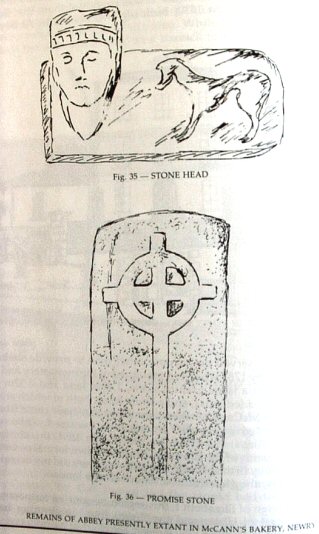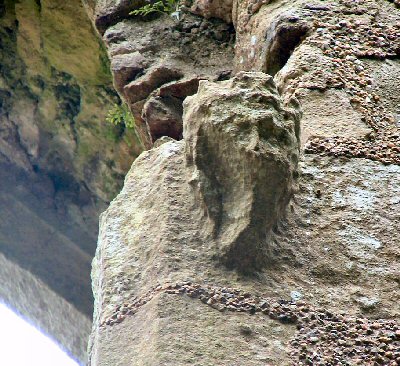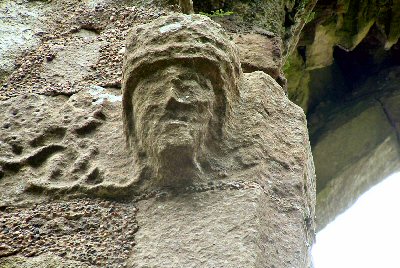We stated earlier that we would look again at the EHS’s report on McCann’s Bakery and specifically on the continuation of its ‘Historical Information’.
‘John Rocque’s 1760 town map and Matthew Wren’s of the following year both mark the location of the castle as ‘The Shambles’, indicating that it has long ceased to be used for its original purpose.
The 1838 valuation makes no explicit mention of a castle, merely noting the building as one of a number of tenements along
The 1863 valuation notes the building as ‘part of the monastery’. Interestingly the mistaken belief that the castle was the Cistercian abbot’s house has persisted to the present day. This view is reinforced by the carved stones, both of which are vestiges of the abbey; however neither is in its original position (the cross was formerly in the street).

The ‘Open Window Advertiser’ of 1901 states (p69) that ‘a few portions of Bagenal’s Castle still remain, but are altered into small dwellings now occupied by workmen.’ A photograph of the castle seemingly taken around 1937 shows it still inhabited (Frontier Sentinel 3 April 1937).
The original
The reader will note that by the mid-eighteenth century the ‘castle’ had completely disappeared from (much more accurate) maps! In its location there is now low-grade housing. (Wren’s map to follow!). It had ‘long’ (EHS word) ceased its original purpose.
The author of this report however is quick to judgment without citing any evidence. Townspeople’s belief that this was originally the Abbot’s House is ‘mistaken’ despite:
The latterly discovered (ironically by a later EHS survey!) vaulted cellar which bears striking similarities with other such in Cistercian monasteries throughout
The religious figurehead carvings found there, almost identical to those found in that other local ‘monastery’ building ‘dissolved’ at the same time, Killeavy Churches. Is there a similarity between these photos and the above sketch? And therefore between the earlier religious use of the building and what was found in situ there ?

We have written of the latter here (see Related Articles).
That ‘neither is in its original position’ is a most preposterous statement since they were ‘removed (one imagines by the EHS itself!!) ‘for cleaning’ out of Newry several years ago, and we have no word if and when, they will ever be returned to their rightful position!!
According to the EHS author, the ‘castle’ magically reappeared in the mid-twentieth century and suddenly ‘expanded into the bakery in 1939’. Oh Yes??
The selective quote from Open Window omits the continuation which states that ‘
We will next look at the actual two Environment and Heritage Service Reports – rather than their Historical Information summaries upon which we have concentrated until now. Since the first found practically nothing, we will deal with them together.
… Nicholas Bagenal 1509-1590 …
